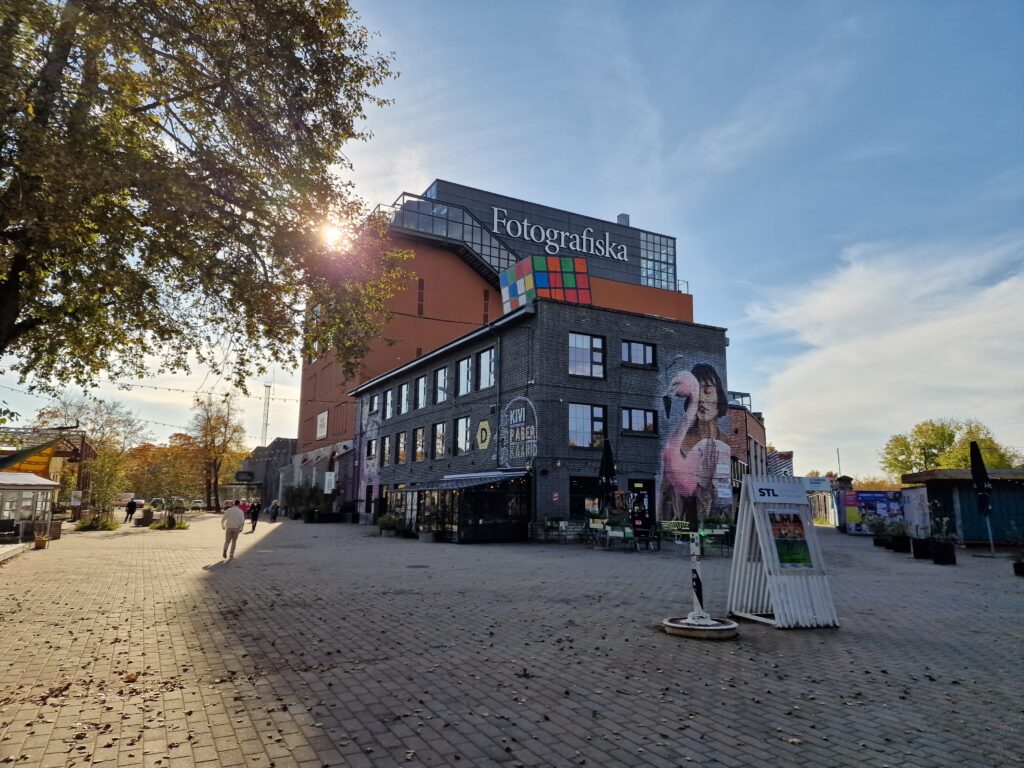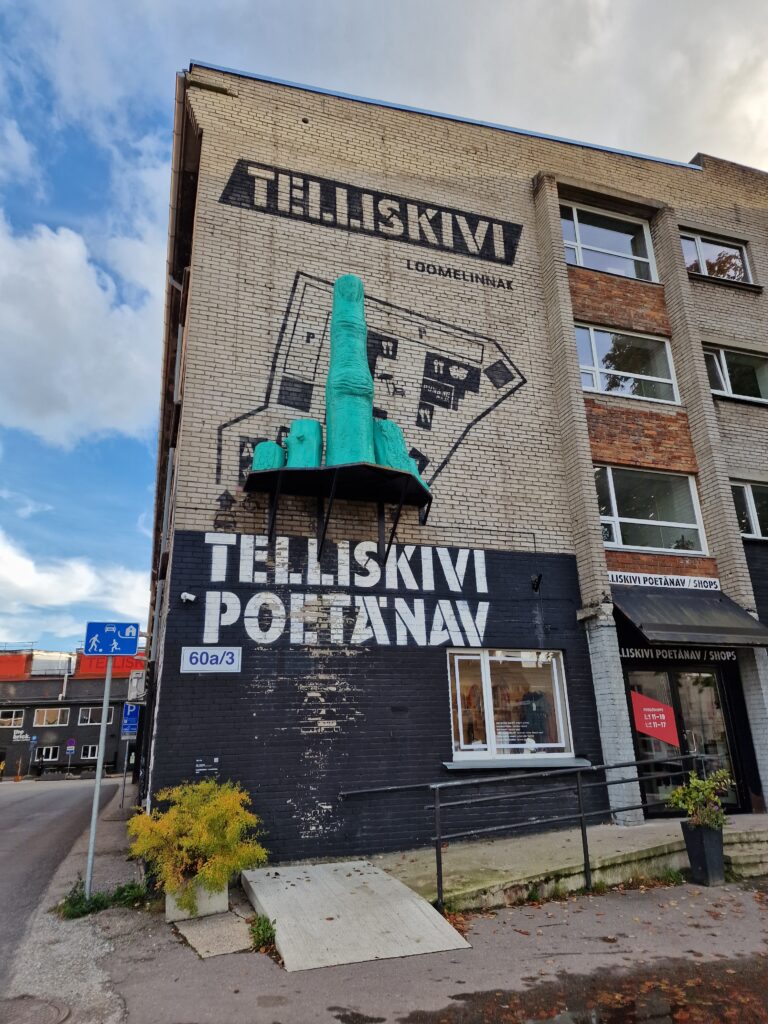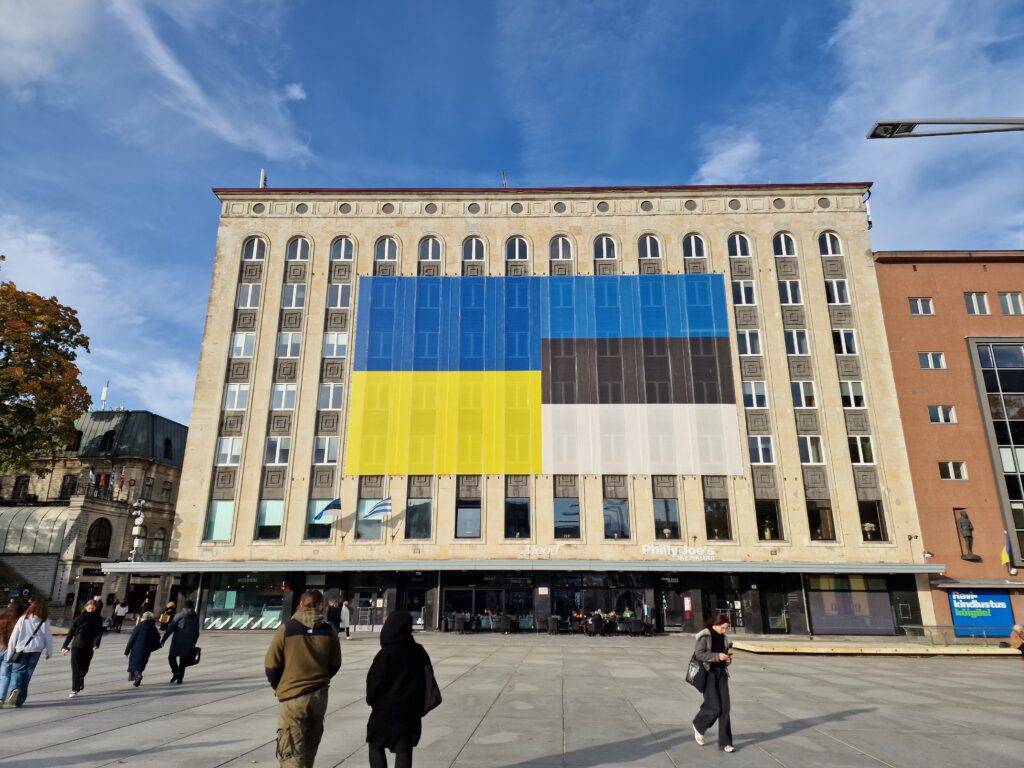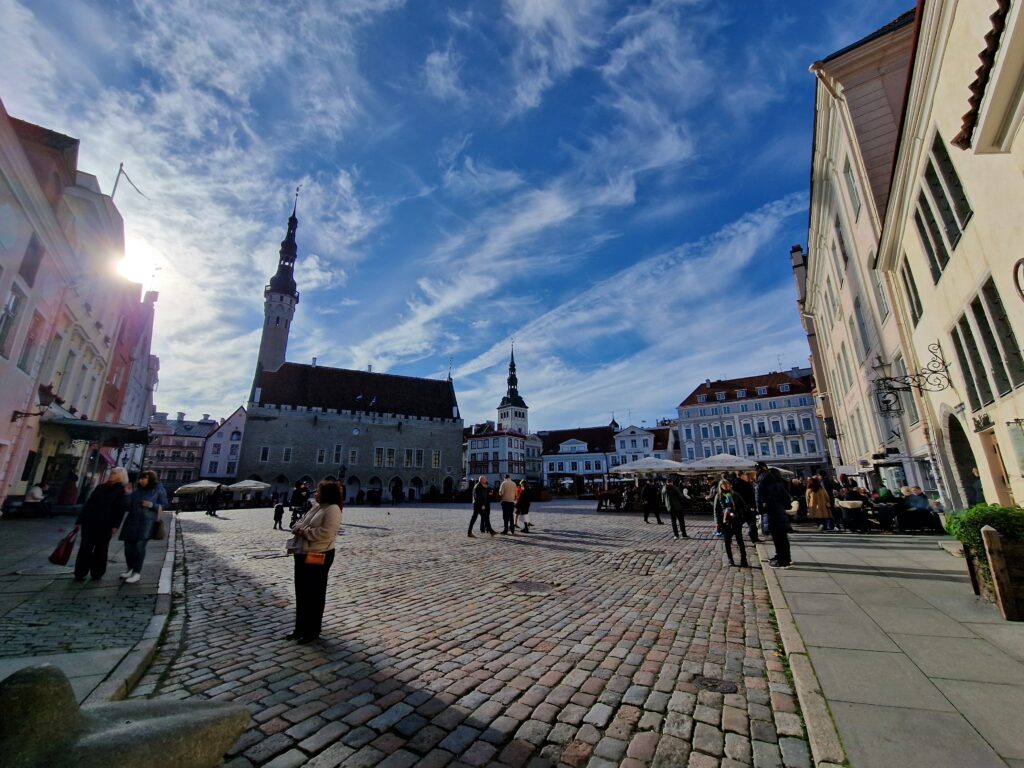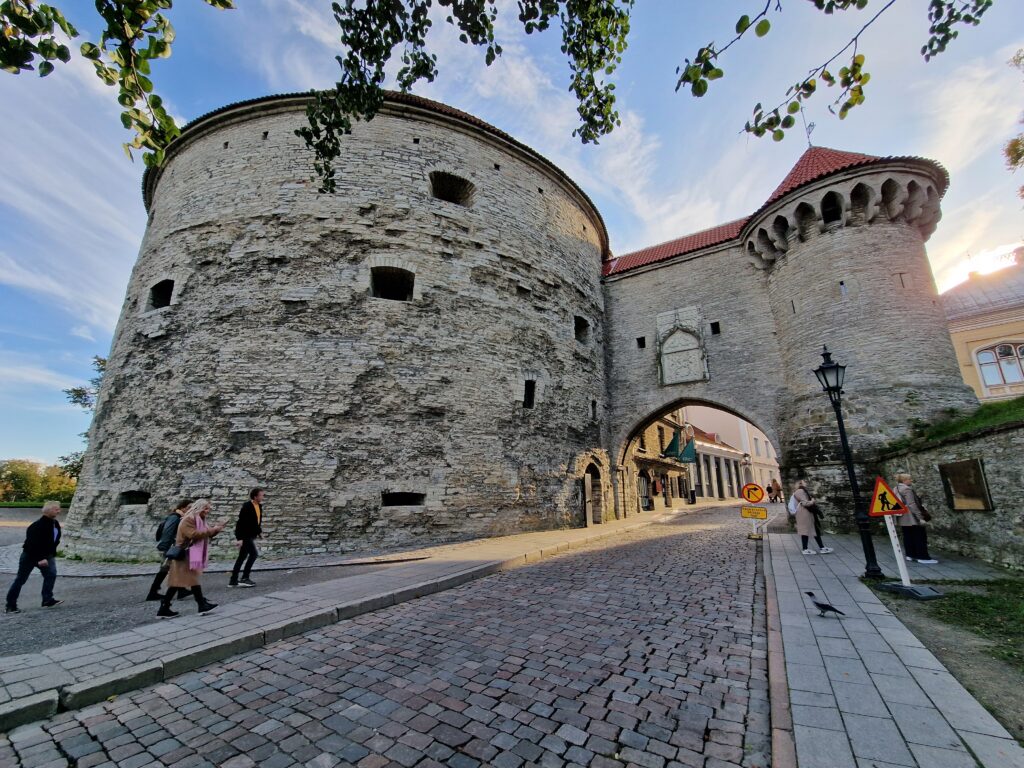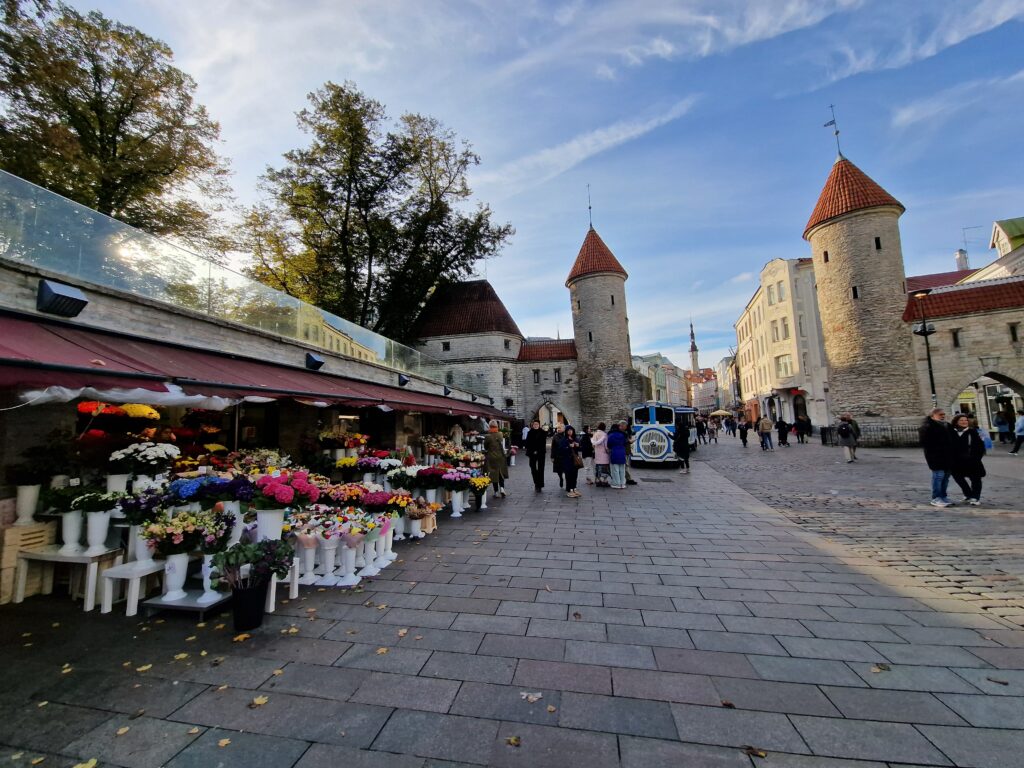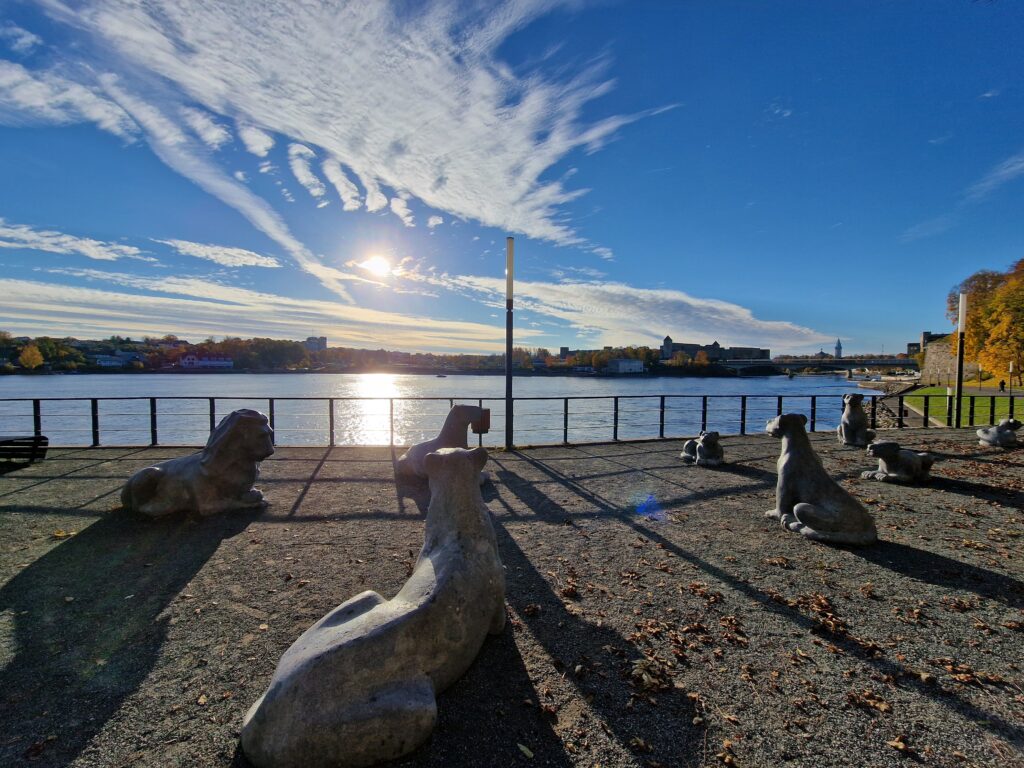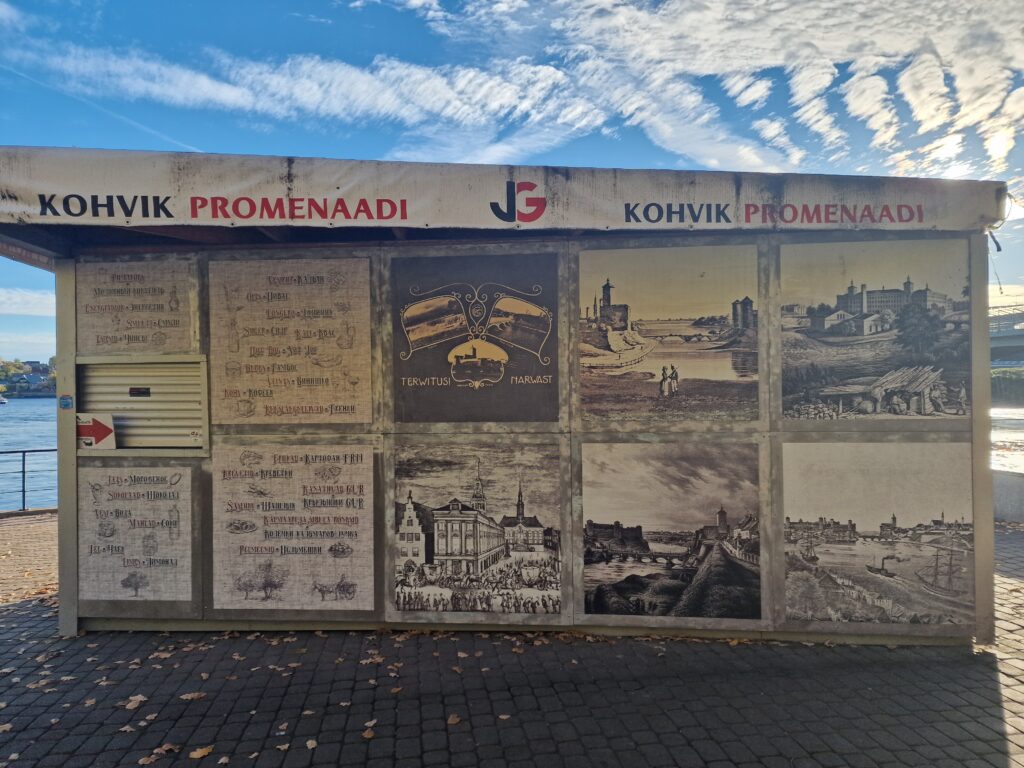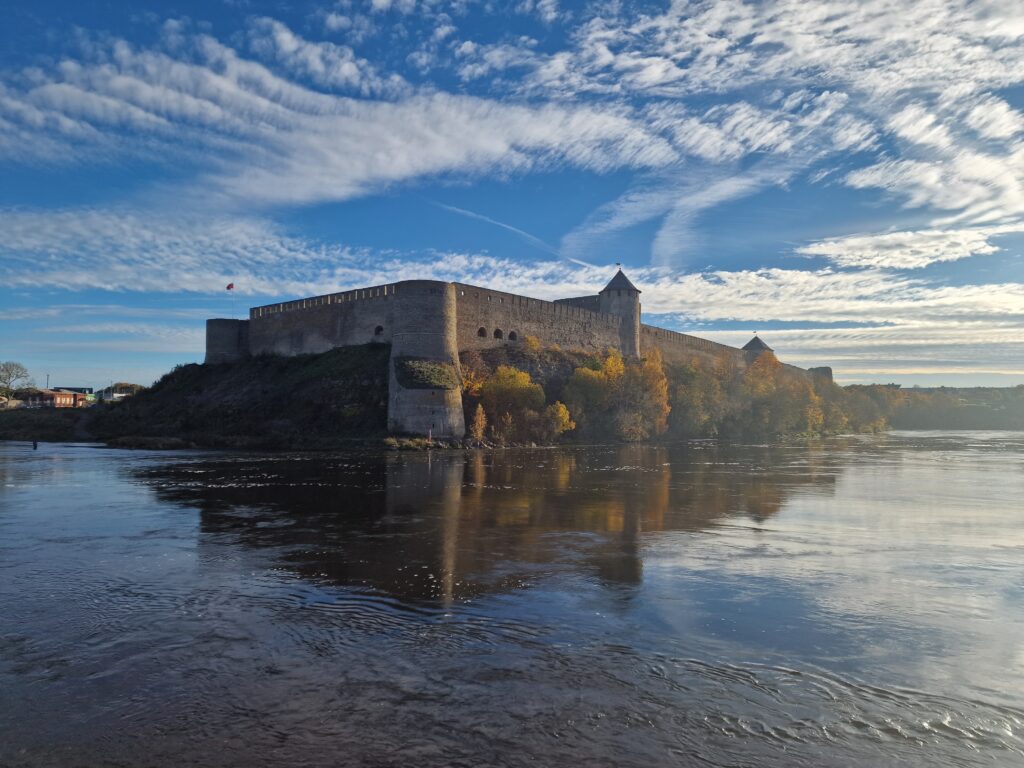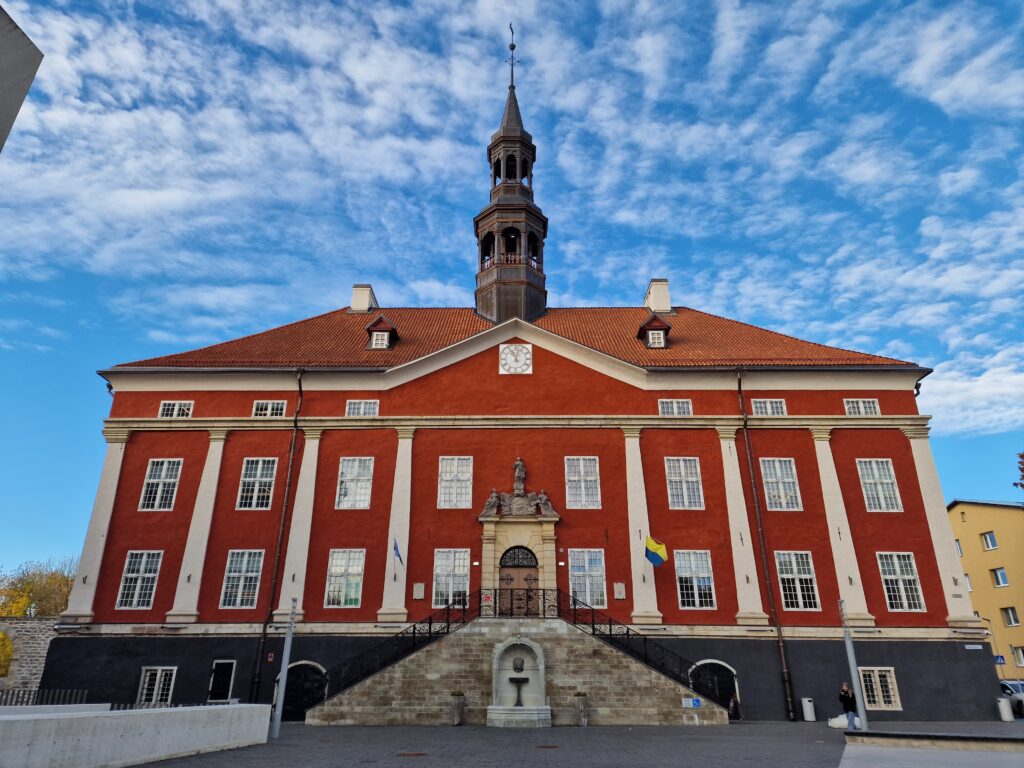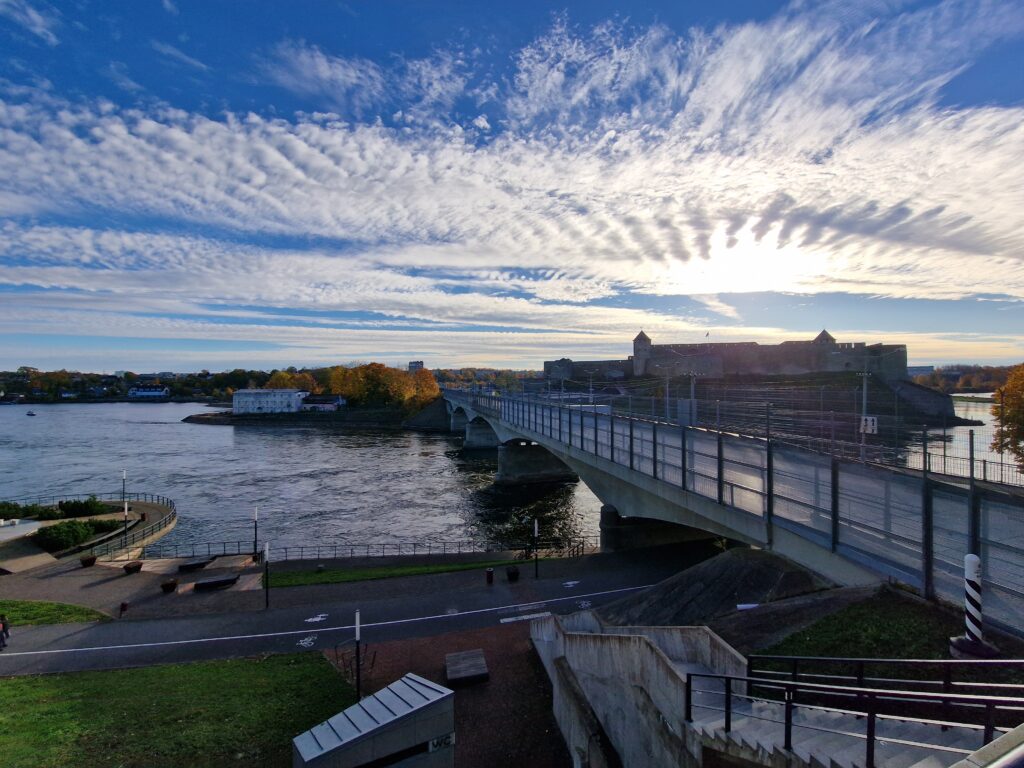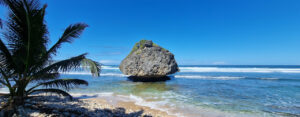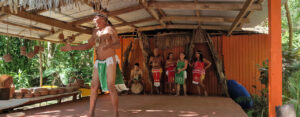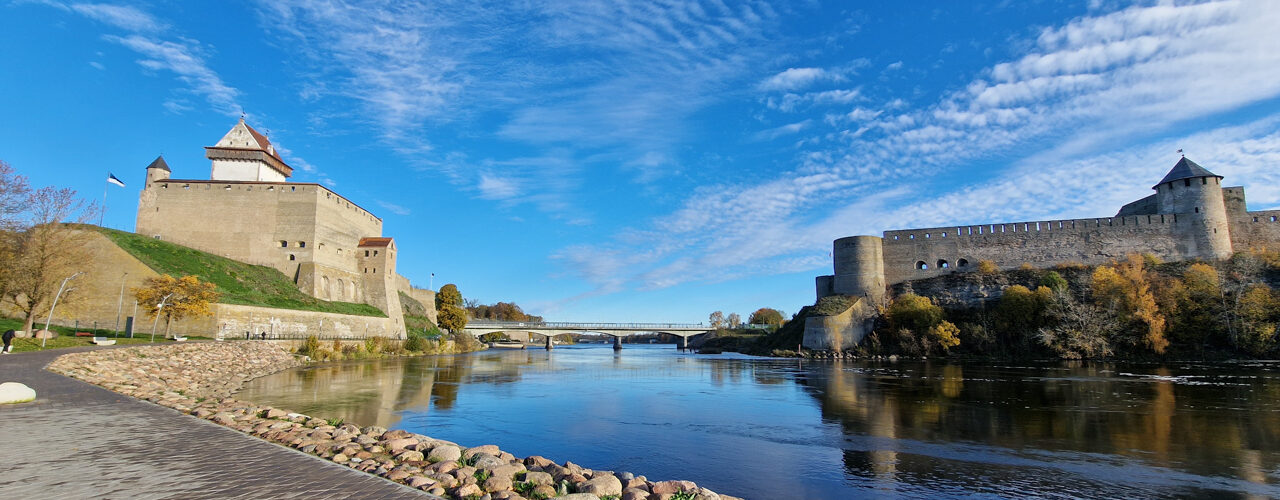
Narva Gonna Give You Up
We arrived in bustling Tallinn on an uncharacteristically sunny day following weeks of forests and frozen lakes in Scandinavia. I should mention early on that Estonia also classifies itself as Scandi, and it is clear from the shape of their Nordic pennants and generally relaxed pace of life that they fit quite nicely in the club. Brand them as Eastern European or, far worse, “ex-communist”, and risk expulsion from the nation entirely. We began in Telliskivi, Tallinn’s former industrial district turned hipster haven, the type of place where people wear second-hand jumpers that cost more than first-class flights to Estonia. The streets were lined with wooden houses that looked as though they’d been left to fall apart but had instead aged into something stylishly shabby. There was no denying Telliskivi’s charm or, in comparison to our previous destinations, cheaper beer prices.
From there, we tackled the city centre on one of our now customary Lonely Planet self-guided walking tours. Tallinn’s Old Town is impossibly well preserved, a cobblestone labyrinth of medieval buildings, ornate churches, and the kind of squares where you expect to stumble upon a jester or a lute player. Toompea Hill was our first stop, a place that rewards you for climbing its exhausting slope with the best views of the city. On one side, the Old Town unfurled in a collection of red rooftops, spires, and narrow alleys while, on the other, Tallinn’s modern skyline rose confidently into view—sleek, glassy, and unmistakably tech-savvy thanks to former Prime Minister Kaja Kallas’ obsession with technology.
The Aleksander Nevski Cathedral was next, a lavish Russian Orthodox church that looked like someone had dropped a part of St. Petersburg in the middle of Tallinn, just to keep everyone on their toes. It was ornate and impressive, though impossible to look at without being reminded of Tallinn’s complicated history with its eastern neighbour. That reminder was everywhere, particularly in the sheer number of Ukrainian flags fluttering in windows, squares, and tied to lamp posts. Estonia’s proximity to Russia made the solidarity feel not just heartfelt but necessary, as though waving the flag wasn’t just for support but also a small act of defiance.
We wandered through the central square, Raekoja Plats, where pastel buildings surrounded us like a box of festive macarons. Tour groups gathered in clumps as guides waved umbrellas with the urgency of air traffic controllers, trying to keep the masses from wandering off in pursuit of magnets. Tallinn has a superb ability to feel alive without feeling overwhelmed, even on a busy national holiday. Fat Margaret, a tower that once guarded the city, was impressive in its own squat, stubborn way, though its name feels like the kind of insult you’d hurl at your aunt during a heated game of Monopoly. Equally imposing was the Viru Gate, a medieval entryway that seemed to mark the threshold between Tallinn’s ancient core and its thoroughly modern ambitions. The gate buzzed with activity—locals carrying groceries, tourists carrying maps, and the occasional electric scooter zipping through like a rogue missile, scattering all in its path.
With the capital behind us, we followed Estonia’s northern coastline, a stretch of road framed by endless forests, shimmering glimpses of the Baltic Sea, and a distinct lack of human activity. We kept our eyes peeled for brown bears, as Estonia is home to the largest population in Europe, and despite every bend in the road feeling ripe for a “bear encounter,” we saw nothing but wood, which was both disappointing and slightly relieving. Eventually, the forests gave way to Narva, Estonia’s easternmost city and the final European outpost before Russia. Estonian flags lined one side of the River Narva, Russian ones the other and yet, instead of tension, the place felt strangely calm for somewhere perched on the edge of a geopolitical fault line. Elderly babushkas with overstuffed suitcases trundled across the short bridge to do their weekly shops, while Russian fishermen casually cast their lines without concern on the far bank —border tensions reduced to a slow-moving river and the occasional huff of a disgruntled trolley wheel.
Narva itself felt like a city in transition. Decades of Soviet rule left their mark—hulking apartment blocks and a lingering Russian-speaking population—but signs of change were everywhere. Modern university buildings stood proudly alongside Soviet relics, a visible testament to the EU investment being poured into the region. Estonian flags fluttered alongside EU banners, and the encouragement to embrace the Estonian and English languages over Russian was politely insistent but hard to ignore. Still, there was no sense of conflict here—just a kind of pragmatic acceptance. The country’s direction is unmistakably forward-facing, a quiet determination that seems to define much of Estonia as a whole, and further examples of which we would uncover as we abandoned the border and headed southwest to the nation’s second city: Tartu.
J
